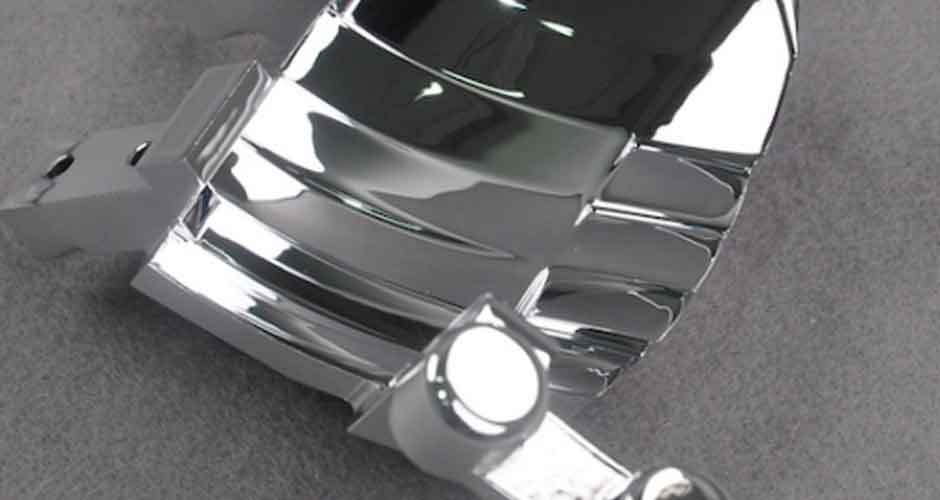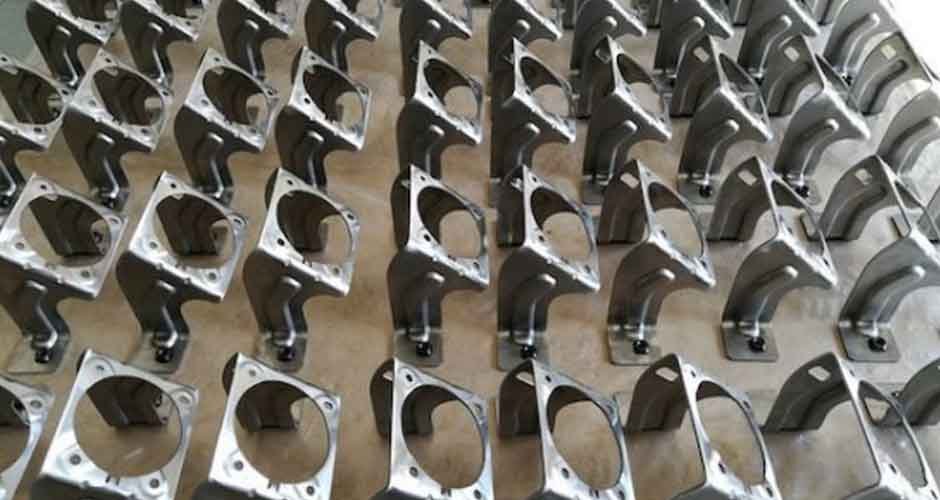How do you compare welding and riveting? Metalworkers often debate over the effectiveness of these two sheet metal processes. However, it’s not about riveting vs welding. You can make perfect joints using any sheet metal fabrication process; it depends on how you overcome process limitations.
Find out best practices to optimize each sheet metal fabrication process with us. Knowing the process allows you to utilize it better and to overcome their limitations.
Welding: Optimize welding for sheet metal parts
Welding is a versatile technique widely used to fuse sheet metal parts. When working on sheet metal fabrication, you can optimize the welding process to form perfect metal joints. Here’s how;
Step 1: Surface Preparation
For best results, ensure that the metal surface is free from contaminations. Any contaminant can affect the weld’s integrity. You can use compatible cleaning liquids to get rid of rust, paint, and grease. If you are working on uneven sheet metal fabrication parts, it’s recommended to bevel the surface.
Step 2: Effective Welding
Welding requires masterful skills to obtain optimal results. You should effectively manage critical factors such as travel speed, arc length, and heat input. Plus, employing advanced methods to control the weld pool and manage heat distribution is the key to achieving perfect welds.
Step 3: Joint Formation
The most crucial step in the welding process is joint formation. You need to be mindful of specific application and load requirements when adjoining parts. The joint design has a direct effect on weld strength. Therefore, choose an appropriate joint design. All designs have specific applications, including butt joints, lap joints, T joints, and corner joints.
Welding Cons: When to Avoid Welding?
Welding offers various advantages, especially for joining sheet metal parts. It provides you with accessibility to complex part designs. The surface finish is always great though it requires additional polishing. Welding is your go-to technique if you want high-strength permanent joints that are aesthetically pleasing.
However, the welding process is time-consuming and requires skilled professionals. The welding expenses are usually high as it involves electricity and substantial labor costs. The excessive heat involved in the process often adversely affects sheet metal parts, such as color distortion. The joint formed using welding are permanent; there’s no alteration flexibility.
Riveting: Optimize Riveting for Sheet Metal Parts
Riveting is a crucial sheet metal forming process. It is used for specific applications when permanent joints and thermal heat are undesired. Riveting can be optimized for sheet metal fabrication to obtain high-quality rivet joints.
Step 1: Precise Alignment
Place adjoining parts onto each other and align them to perfection. The rivet holes must align properly to form intact joints. You can prevent stress concentrations and reduce the risk of premature failure with proper alignment.

Step 2: Embedding Rivets
The crucial step in the riveting process is the proper embedding of rivets. Your riveting tool must be compatible with rivet joints, as specific tools are used for various rivets, such as solid rivets, blind rivets, or pop rivets. Only properly embedded rivets form robust and dependable joints.
Step 3: Inspection
After completing the riveting process, a thorough inspection is necessary. You should make the necessary adjustments to make the joints perfect. Recheck critical factors such as load distribution, joint strength, and fractures to ensure safety and quality.
Essential Considerations Before Choosing Riveting or Welding
You can use riveting to join two different metal parts, unlike welding. As in sheet metal manufacturing, you are often required to fuse various kinds of metals. The riveting process can be automated; it is fast and less expensive. The rivet joints can be used for high-strength applications. Moreover, riveting doesn’t require additional clean-ups. Once parts are joined, they are good to go.
Rivets don’t offer aesthetics; they stay visible on metal surfaces. The rivet joints are not strong like welding joints. The hole alignment in the riveting process is crucial because it directly affects the parts’ structural integrity. Lastly, riveted joints are prone to corrosion damage.
Sheet metal fabrication parts could be joined using any of the two techniques. But you should not randomly select a technique to fuse sheet metal parts. If you want optimum results, your selection should be based on the following essential considerations:
1.Material Type:
When working with dissimilar materials, it is recommended to choose riveting. It is because riveting allows you to join a variety of metals together without worrying about their properties. However, you should see if the project requirements allow you to go for riveting or not.
2.Joint Strength:
Riveting may not be a suitable option if you’re working on parts used for high-strength applications. In most cases, riveted joints can’t sustain excessive weights leading to fractures or compromised structural integrity.
3.Heat Sensitivity:
Some sheet metal parts are sensitive to heating because of thin materials or aesthetic constraints. In such a case, you should go for riveting, as welding is purely based on electric heating.
4.Design Flexibility:
Welding allows you to access complex design attributes and join parts at different angles and curvatures. But the welding process is not alterable as welds are permanent. On the other hand, rivets are semi-permanent and provide some room for alterations.
5.Aesthetics:
If you want a smooth surface on metal parts, then there’s no alternative to welding. The rivet joints always stay visible on metal surfaces. The riveting process also involves drilling, which affects the aesthetics.
Conclusion
You can use riveting to join two different metal parts, unlike welding. The riveting process can be automated; it is fast and less expensive. The rivet joints can be used for high-strength applications. Moreover, riveting doesn’t require additional clean-ups.

However, Rivets don’t offer aesthetics; they stay visible on metal surfaces. The rivet joints are not strong like welding joints. The hole alignment in the riveting process is crucial because it directly affects the parts’ structural integrity. Lastly, riveted joints are prone to corrosion damage.
Both methods are effective in joining sheet metal parts and could be used for sheet metal fabrication. Welding offers versatility and strength, while riveting provides simplicity and accessibility. You can choose any method depending on your project requirements and optimize it to yield the best results.
FAQs
Q1: How to compare riveting and welding costs?
Riveting costs majorly depend on the tools and rivets used in the process. These costs are fixed; therefore, the overall process becomes less expensive. However, welding costs depend on skilled labor and electricity rates which often fluctuate, making the process more expensive.
Q2: Can the riveting and welding process be automated?
The high-tech industries have automated both processes after recent advancements in sheet metal technology. The entire fabrication process is completed with minimal human intervention. For instance, the welding and riveting process is completed by robotic arms.
Q3: Which technique is recommended, riveting or welding?
Both techniques have specific applications and advantages. There’s no point in recommending one technique. The welding technique is used when riveting is unusable and vice-versa.






